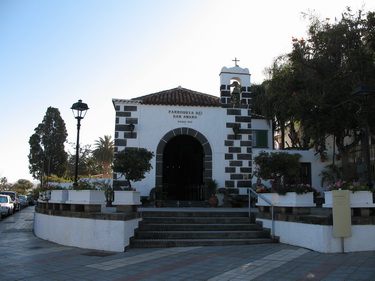Chapel of San Amaro. [Saint Amarus]

The chapel of San Amaro, the oldest in the Municipality, was built in 1591 and its original function was to convert to Christian use the places which had a deep spiritual significance for the aborigines, such as the Llano del Bailadero [heathen dancing ground] and the burial ground on the Martiánez coast. The chapel was built by the local inhabitants, as at the time there was no consecrated shrine in the tiny hamlet at Caleta de la Orotava.. The fiestas of San Amaro were famous during the Ancien Régime (pre French Revolution). In 1713 the chapel was in danger of falling into ruin and the administrators ceded it to Valois, leaving him the perpetual use of the land belonging to it, on condition that he restore the chapel. From 1593 it was looked after by the Dominicans from the Convent of Saint Benedict in La Orotava.
